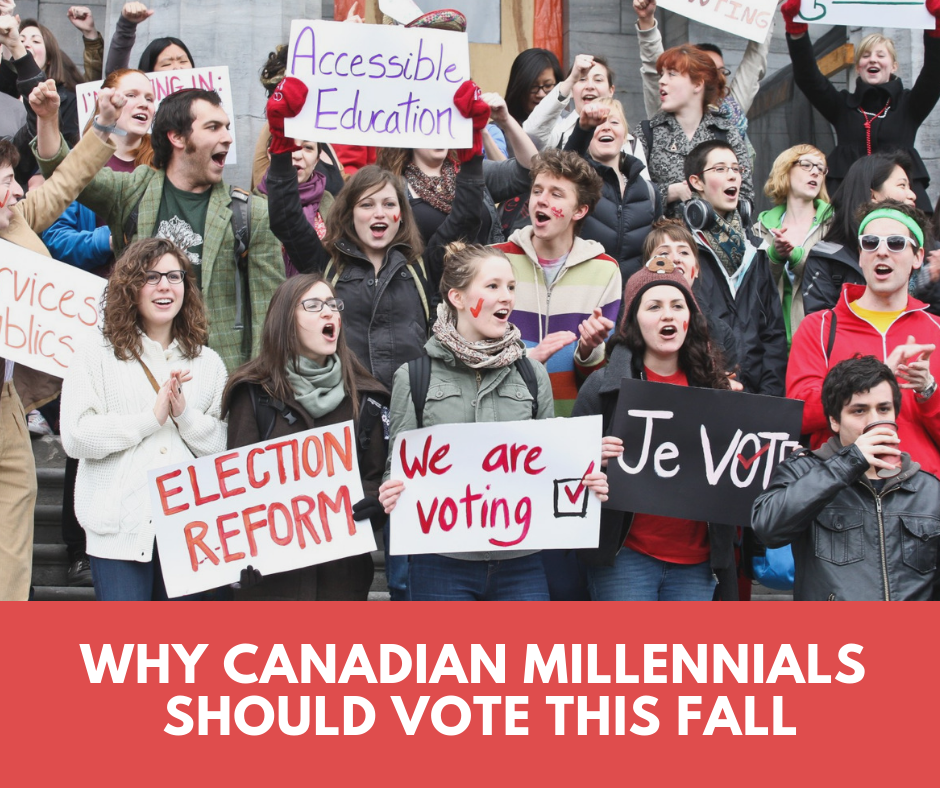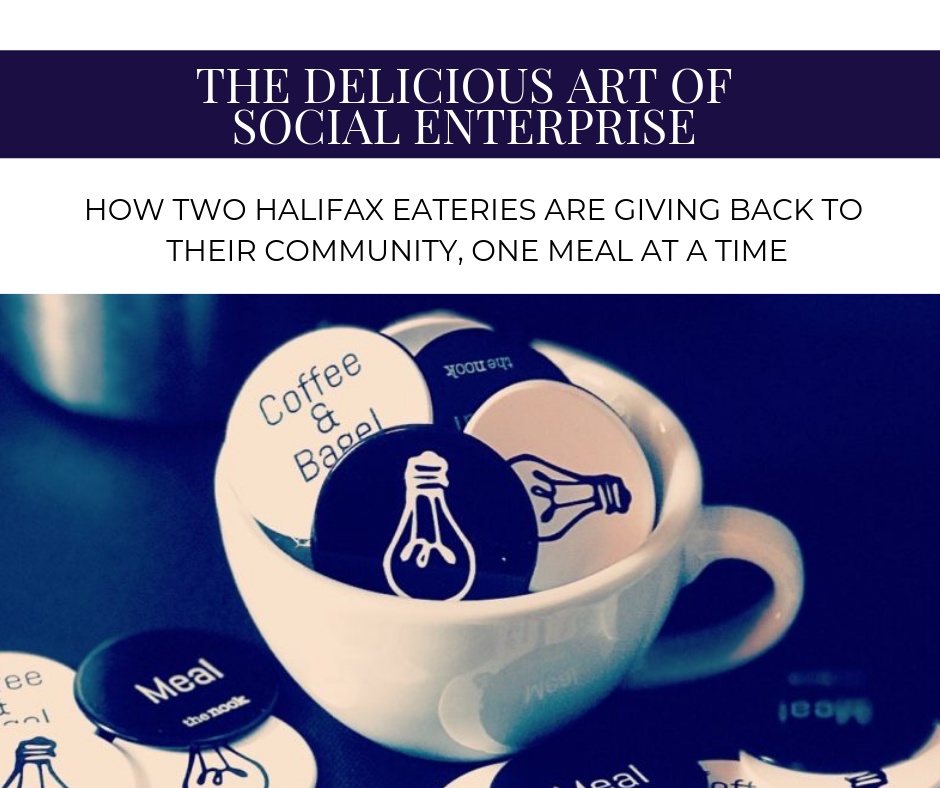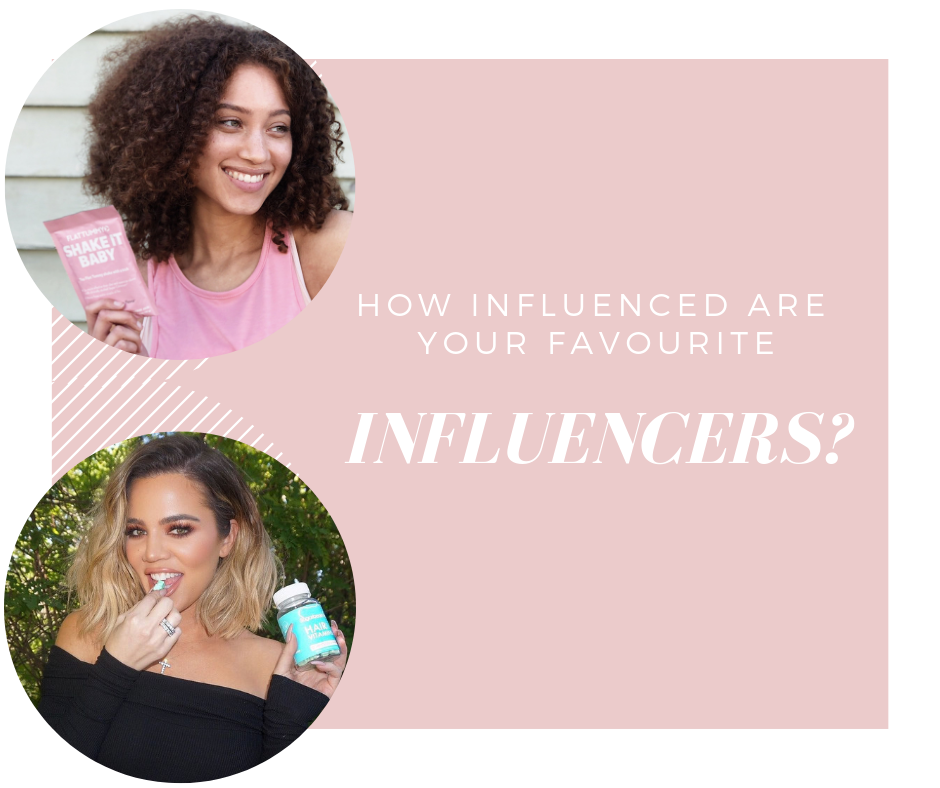
Gillian Gamble
Your vote has never been more important than in the next federal election. For the first time in Canadian history, all Canadian millennials – those born between 1980 and 2000 – will be eligible to vote in the federal election scheduled for Oct. 21, 2019. This is the first time that baby boomers will be outnumbered by millennials, so we must understand the importance of our vote.
Students attending university are considered “the future,” but if we don’t take an interest in what will impact our future, then are we really the future? And how optimistic can we be?
According to Elections Canada, the problem when it comes to persuading millennials or young voters to vote is that the people doing the persuading are doing it wrong. Millennials are not showing up to vote because they don’t see anything worth showing up for. Many millennials are experiencing new challenges such as university, buying a house, paying for health insurance, starting a new business, all of which could change their perspectives on political issues. You cannot predict where you will be in four years, but you can be sure that the political official elected and the policies they implement will impact your life.
One of the key drivers of low youth voter turnout is the lack of political and civic knowledge.
Why do millennials lack political knowledge?
Elections Canada reports that schools are not focusing enough attention on political education in their curriculum. Political parties and candidates have not made strong efforts to engage young people in their platforms. Parents are not discussing politics and civic involvement as much in the past. Youth are also not looking to know more about the political system. The lack of interest is also fuelled by the idea that the government does not understand the interests and needs of young Canadians.
The lack of interest in voting today will affect Canadian democracy for generations to come.
How do we reverse this trend?
The challenge is to inform youth about the value of voting. There is no point in getting youth to vote if they will not actively be politically engaged. The goal is to create a lifelong habit of political engagement. Voting for a political party that reflects your interests and values can change the future of public policy. Voter participation requires the creation of a new social norm. As a society, we must harness our resources and talents together to create a new norm of political participation. Canadian political parties, government departments, government agencies, non-profits, and corporations should be leveraged to promote voter participation and generate a greater momentum.
Elected officials and political parties must become eager to reach young people. They must understand what motivates millennials because it may determine who governs the country. Young voters appeared in large numbers in the 2015 federal election and with their significant representation in the upcoming election this number will only grow. The candidates setting the stage for the 2019 federal election make up the youngest trio of party leaders competing to be prime minister in Canada’s history; Justin Trudeau, Andrew Scheer, and Jagmeet Singh may be able to secure the support of voters.
Voting is a democratic privilege that is not available to those in all countries of the world. We should reflect on how fortunate we are as Canadians to have the right to vote. Starting in 1867, voting was restricted to males and owning property of a certain value. Women, certain racial and ethnic groups, and Aboriginal persons have fought for their right to vote. The act of voting is a demonstration of respect for the challenges and sacrifices that others have made.
No one can force all Canadians to vote in elections, but this year I hope we set aside our excuses, as it is our time to get out and vote. Governments form the best policies when more people are involved. We as millennials have the power to decide the future of our generation.
Speak up. Make a choice. Take part in the election for the better of your future.

Emma Cassidy
Social enterprise and french fries.
The two are normally thought of as two separate entities, but when you visit The Nook and The Auction House in Halifax, the pairing is as common as a pint of beer and wings. Both establishments practice the art of giving back to the community through two unique concepts, both of which involve the customers directly. This is what makes them successful. People love to be a part of something, and when that something helps those in need; they have hit the jackpot.
The Nook Cafe started their token Token Program in January of 2018 and have committed themselves to battling food insecurity across Halifax through this initiative ever since. One token costs customers $2 or $5 and represent either a coffee and a bagel or a full sized meal. The idea is for customers to buy them at the shop and either distribute the tokens themselves or leave them for those who come inside. It’s an inspired project and one Nicole Myles-Brook, the owner of The Nook and brains behind the Token Program.
“Part of that is really empowering when you see how much you can do, and part of it is really scary because you see what’s still left to be tackled,” says Myles-Brook, in regard to what the program has accomplished so far.
The Nook has worked hard to connect with their clientele who visit the café and also reaches out to those who they believe would benefit from the token program. They’ve partnered with a handful of shelters, after school programs and community centres to distribute their tokens. This enables them to reach a broader scope of people who may not be able to come into The Nook themselves.
“It’s a vulnerable position to be in, asking for help, and I don’t think people are innately very good at it”, says Nicole, when asked how well the program works for people to come in and use the tokens in the cafe. “But once people have been welcomed into a situation where help is not only offered, it’s celebrated, people feel supported and valued, that’s when something really works.”
This outlook is shared with another Halifax restaurant, The Auction House, who holds daily in- house auctions during regular business hours. Food items are auctioned off to customers and the proceeds are then donated to a local charity of choice, which changes monthly. It’s a simple concept but effective. Not only does the restaurant use their position as one of Halifax’s busiest eateries to their advantage to raise money for charities, they’re doing so in a way that’s unique and engaging with their customers. This is why it works so well.
Both The Nook and The Auction House use their positions as well-known Halifax eateries to their advantage, taking to social media to influence customers to participate in both ventures. They each have very active Instagram and Facebook accounts which often promote their philanthropic activities. Through regular event scheduling on Facebook and polls on Instagram, they are able to get a better understanding on who their clientele is and how they want to see their favourite eateries give back to the community.
Even though social enterprise was not the first area of business both spots thought they would get involved with, it’s now an important part of their strategic plans moving forward. The Nook is looking to hold monthly ‘pay what you can’ dinners dedicated to those in need of a meal.
Whether it be because they can’t afford it or because they can’t find the time to sit down and eat with their family, this new initiative is aimed at bringing those in need, together.
The Nook’s Token Program has also inspired a new project from Saint Mary’s University which follows a similar concept. The Square Roots Token Program charges $5 per token. The token represents one full meal. The students at SMU were inspired by the benevolence of The Nook’s initiative and have since partnered with nine Halifax restaurants that each accept these tokens as a form of payment. Projects like auctioning food for charity and selling affordable tokens to fill someone’s stomach just go to show how well small passion projects can grow into something much bigger.
It’s moments like this that prove how paying it forward pays off.

Olivia Hernden
In a society dominated by social media, it is not a surprise that people like to follow the latest trends. To stay on top of the ever-changing waves of pop culture, we turn to Instagram’s elite to keep us updated.
These are influencers, with an army of thousands of followers waiting to see what they post next. It’s a dynamic that is beginning to create controversy around the ethical aspects of influencers being paid to promote specific products. Two products that have caught the attention of many followers who idolize famed influencers are diet teas and SugarBearHair vitamins. The spike in social media advertising has led to our feeds becoming a hub of “#ad” photos from various influencers. These moguls are being paid to pose with products, like diet teas, and encourage their followers to then purchase the product.
It’s not a new feat to have celebrities or models make brand deals with trusted companies. However, the rise in Instagram influencers promoting products that allegedly help you lose weight, grow your hair or change your body in some other form is an ethical conundrum. Do influencers actually use these promoted products? Have they used them long enough to see results before promoting them? What are they getting from this? The answer to the first two questions remain undetermined, but most likely these influencers do not rely only on diet teas to stay fit or eat gummy bears to achieve long hair. The answer to the third question is money. Both major and minor influencers receive huge payments from brands to post a photo on their social media feeds, whether they use the product or not. In an article written for the marketing blog Later, Lexi Carbone includes a chart of how much an Instagram influencer with 170, 000 followers’ charges for various types of postings. The chart is included below.

With the amount of money influencers are being paid to promote a product, it is not surprising that they are willing to endorse unethical products. The aim for both the brand and the influencer is to sell the ideal. “Buy these SugarBearHair vitamins and have hair as long as Tana Mongeau; buy this diet tea and have abs like Kylie Jenner.” The use of influencers to sell products to the general public is sly. Often, people are only buying the product in hopes of being like the person they idolize. In the article, “Influence via Comparison-Driven Self-Evaluation and Restoration: The Case of the Low-Status Influencer” by Edith Shalev and Vicki G. Morwitz, it is noted that “identification influence” is a major part of consumer buying habits. They suggest that consumers purchase products identify with a specific social status, thinking that the product will establish a bond between them and the influencer. With that in mind, it is interesting to see so many influencers willingly promote products that are believed to be unethical to their fan base, all for a cheque.
Instagram influencers are notorious for being publicly thankful for their followers, often posting photos with captions dedicated to their gratitude. If they care so much about their supporters, why are influencers willing to deceive them with “Insta-scam” products? This is an unfortunate aspect of the social media motivated world we live in today.
What we can do is pay close attention to the captions on influencer photos, search for the “#ad” and do follow up research on the product before purchasing it. It would be fantastic if any of these quick fix products actually worked in a healthy manner, but that is not the case. In fact, if you sift through your Instagram explore page, you’ll notice most of these promotion photos are only taken with the product packaging, not the product in use. This goes to show that money was the only objective on the influencer’s mind when they posted a photo to promote the product.
Overall, it is important to stay aware of what goes on behind the scenes of those colourful, enticing Instagram photos. Not everything is as it may seem. Deceit the lies behind a good filter and catchy caption, knowing that influencers do not always have your best interest in mind. Remember, if a product, picture or post looks too good to be true, it is.
